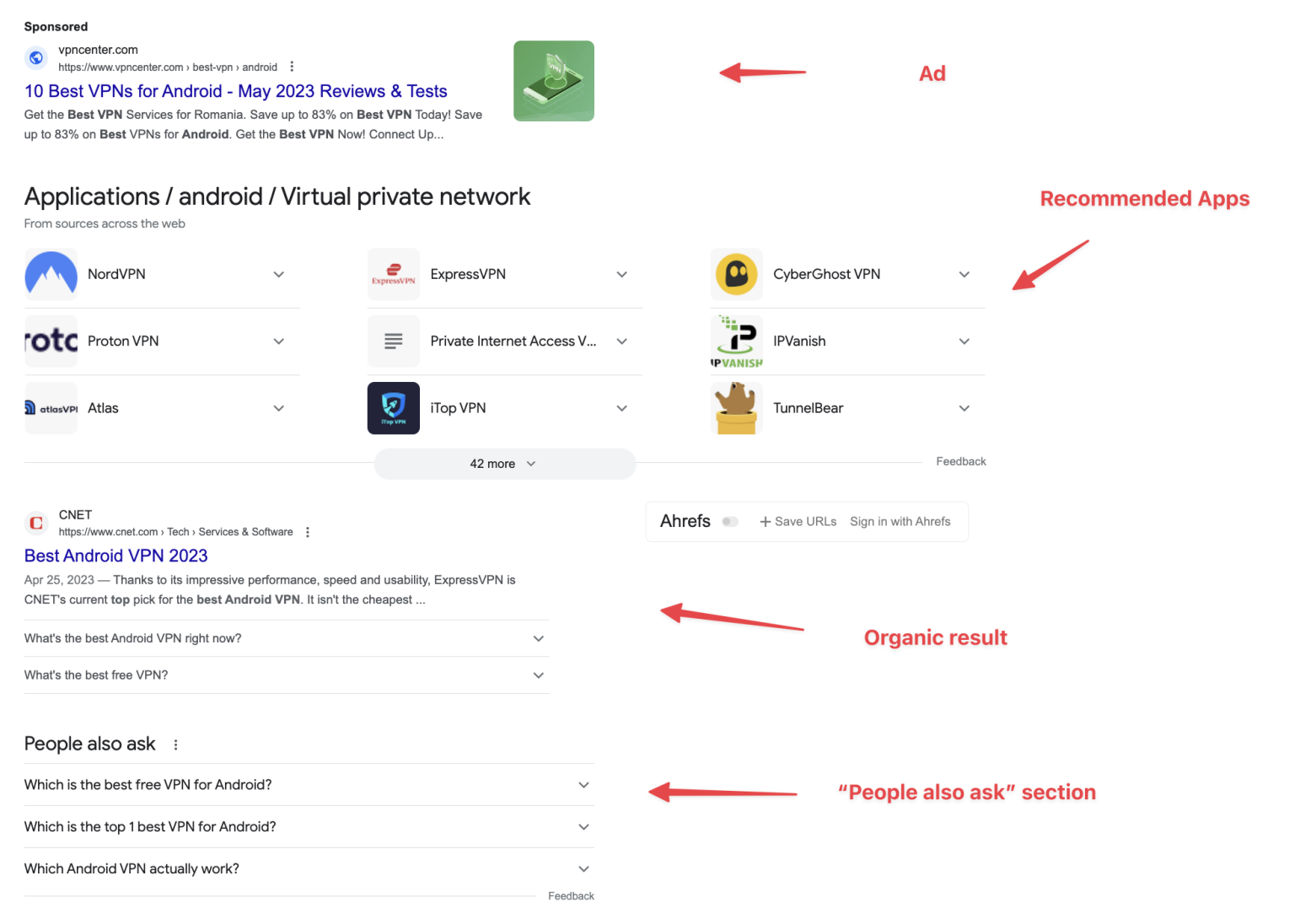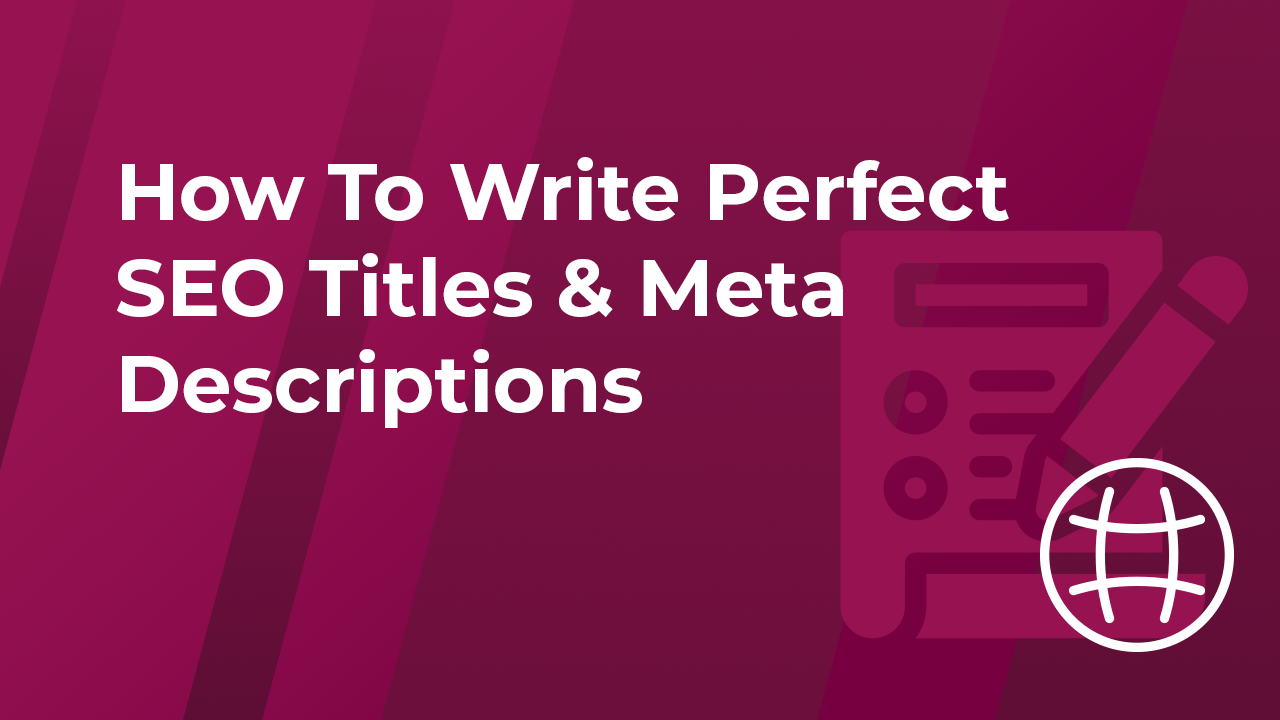Good SEO data can’t singlehandedly carry your pages to the first spot on Google. You need a lot more to conquer the SERP.
However, learning how to write perfect SEO titles and meta descriptions can help with your page’s indexing, click-through rate, and plenty more. On competitive queries, it’s a crucial differentiating factor to help you stand out.
So let’s find out what makes good metadata, and how you can take your SEO titles and descriptions to the next level.
What are SEO Titles and Meta Descriptions?
SEO titles and meta descriptions are snippets of HTML code that tell search engines what your page is about.
As you might expect, the title is your page’s headline. The SEO description is a quick overview of what your page is about. And they’re extremely important in signaling to potential readers that your page has the right stuff.
On your site, metadata might look like a snippet of HTML code embedded in the header of your page. On the search engine results page (SERP), this is what it looks like:

Why are SEO Titles and Meta Descriptions Important?
SEO titles and meta descriptions are the first points of contact your potential audience will have with your content or products. What you say with these few hundred characters can have a huge impact on your interaction metrics.
That’s why learning how to write perfect SEO titles and meta descriptions is so important. It can help you stand out among 10 other similar entries on the SERP, and improve your SEO metrics like click-through rate.
Moreover, the SERP has changed a lot in the past few years. Before, you’d only have to stand out among a few other text-based results. Now, you need to get ahead of ads, images, featured snippets, lists, video links, and plenty more. Here’s a query with rich elements for reference:

If your SEO title and meta descriptions don’t clearly convey what your page is about and why it’s the best pick… you can’t hope to convert impressions into site visitors. Especially with all of these distractions being added to the SERP.
Not to mention, your page’s metadata is also picked up by social media platforms when a link to your site is embedded externally. So if you want your content or products to be presentable on the web, you need stellar SEO titles and meta descriptions. Let’s see how to get that.
Our 5 Steps To Write Perfect SEO Titles & Meta Descriptions
Adding metadata to a page is easy, even if you’ve never formatted something with HTML. SEO tools like RankMath, Yoast SEO, and plenty of other plugins will let you use a simple UI to fill out the metadata.
So we’re not too concerned about the technical aspect of uploading metadata. Rather, we’ll talk about how to conceptualize and actually write stellar metadata.
1. Answer a few basic questions about your page
Your SEO title and meta descriptions should clearly answer two simple questions:
- What is your page about?
- Why is your page the best pick for its particular query?
Anything else is extra. While writing SEO titles and meta descriptions, you should be focused on clearly answering these questions. It’s so important; I’d argue that bland but clear metadata is always better than original, stylish, yet unclear SEO titles and meta descriptions.
To ensure your SEO data properly conveys an answer to these two questions, you should always keep the purpose of your page in mind. Let’s say it’s a product listing, and you’re hoping people buy on your site. The SEO metadata should be focused on outlining the benefits of your product and nudging people toward action.
On the other hand, if your page is a long-form educational piece, your SEO data should be focused on sparking curiosity about the article’s findings.
The easiest way to figure out this purpose is to look at the query type. In general, a query can fall into one of these three categories:
- Navigational. The user is looking for a specific webpage. The query “YouTube” is a good example.
- Informational. The user is looking for information about a topic or site. The queries “recession” or “how to play the guitar” are good examples.
- Transactional. The user is looking to buy something. The queries “running shoes” or “best neck massagers” are good examples of this.
Finding a query’s type isn’t the be-all-end-all trick to writing good SEO descriptions. For example, transactional queries can be further broken down by the types of results that show up on the SERP.
The query “running shoes” will probably have a lot of results from e-commerce sites featuring actual product listings. Meanwhile, the query “best neck massagers” will feature a lot of buying guides that outline the market’s top products.
Nonetheless, figuring out a query’s type is a good first step to understanding what goes into your SEO metadata.
2. Write a fair overview of your page
Vague promises and teases of what you’ll explain have their place in good SEO titles and descriptions. They’re a great way to entice readers to click on your result. But these shouldn’t be your main focus when writing metadata.
Rather, you should try to give as accurate of a representation of your page as possible. The best way to do this is to summarize your page in simple language without any flair or care for CTR (click-through rate). You can reiterate the title and description to be more original later.
So, for example, if you’re writing the metadata for a review, you can mention how much you tested the product you’re reviewing and a sneak peek of what conclusion that led to.
If you’re writing a guide, you can talk a bit about the process, maybe advertise discounts, or mention how many top picks you have.
If you’re writing the metadata for a product, you can mention a feature, a benefit, or a problem it can solve.
So roll up your sleeves, write a good first draft of your metadata, and void being vague at all costs.
3. Make room for your keyword
Both the SEO title and the meta description should feature the primary keyword you’re trying to rank for. This is important for the user experience so potential readers know you’re answering their query. But it’s also important for Google, so its algorithm can rank your page on the right SERP.
Contrary to what you might expect, keywords in the metadata aren’t ranking factors. You’re not going to rank higher because you got an X amount of keywords in the right place. Rather, it’s a prerequisite for getting indexed properly.
So is that it? Just plug the main keyword; no need to worry about other secondary keywords?
From a technical perspective, yeah, that’s it. If you have room for it naturally, you can consider adding some more secondary keywords. It could indirectly help in some scenarios. But other than that, there’s no technical benefit for SEO.
There can be a risk, though. If you overdo it – that is, if you stuff your SEO titles and descriptions with keywords – you can end up hurting your site’s SEO. Not to mention, 160 characters stuffed full of similar keywords won’t convince anyone to click on your SERP result.
4. Keep your target audience in mind
You need to keep your target audience in mind whenever you write anything. And that’s no less true for SEO titles and descriptions than it is for sci-fi books or educational articles.
Fine-tuning your metadata to fit your audience’s interests, preferred tone, and calls to action can work wonders for your CTR.
Granted, this is not as much of an exact science as “add the right keyword at least once.” But I still recommend you keep your target audience in mind and do your best to tailor metadata to what they like to hear.
For example, if the audience for a certain query shows commercial intent but isn’t ready to convert just yet, you can start objection control from the meta description. Let’s say they’re worried about overspending on the product you’re advertising. You can write something like “… and that’s why we analyzed the offer from all of these providers and found the best deal.”
5. Run the snippets through an SEO tool
Tools, bots, and plugins automate half of SEO work today. And you have a lot of options to fine-tune your descriptions and SEO titles. Tools like Higher Visibility (SEOMofo), Yoast, or RankMath will analyze your snippets and signal whether or not you used the right keyword, the right number of characters, etc.
You shouldn’t live by blogging tools like RankMath. They can make mistakes or give a weird recommendation that doesn’t fit all queries. But they’re useful to make sure you cover your bases.
Tips and tricks to write the best SEO titles and meta descriptions
If you followed our 5 steps, you should now have a pretty decent SEO title and meta description. But what if you want to take things to the next level?
Here are some other tips and tricks for perfecting your SEO titles and meta descriptions:
- Stay away from platitudes and cliches. They make it easy to write SEO data, especially after you’ve studied dozens of metadata snippets. But they won’t help you stand out. When you’re competing against 9 other similar links, originality, and specificity can go a long way.
- Stick to a consistent style and tone. SEO metadata is part of your branding, so it needs to reflect the image you want to establish for your company. If your ideal audience appreciates a friendly tone, then that should be reflected in the SEO metadata.
- Edit SEO metadata several times. Just like article introductions, SEO data snippets aren’t long or tiresome to edit. They’re the first point of contact a potential reader will have with your site, so they need to be perfect.
- Consider adding your company’s name next to the title. You should only do this if your name has brand recognition and if you still have room after writing a good title. If you’re not in that scenario, stick to the title you already have.
Conclusion: Writing Perfect SEO Titles and Meta Descriptions
SEO titles and meta descriptions aren’t always a crucial factor in ranking. But in niche cases, they can make a big difference. If you’re already on the first page, for example, and you’re trying to overtake some competitors, the right title and descriptions can help your page stand out.
To write the perfect SEO titles & meta descriptions, you’ll need to:
- Get the basics of your page down
- Write an overview of your page
- Insert your keyword naturally
- Keep your target audience in mind
- Use SEO tools to optimize your metadata
Stick to this process, and you’ll learn how to write perfect SEO titles & meta descriptions in no time. If you liked our deep dive into SEO metadata, check out our guide on how to rank on Google.





